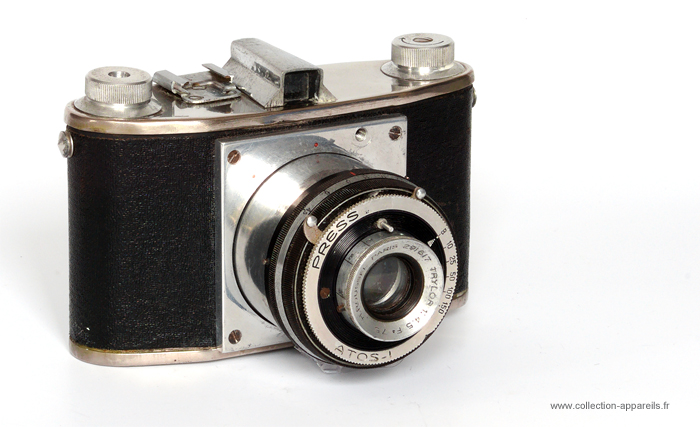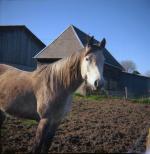|
Vergne Press |
Manufactured or assembled in France from (After) 1946 to (Before) 1949.
Index of rarity in France: Rare (among non-specialized garage sales)
Inventory number: 14390
See the complete technical specifications
Chronology of cameras Vergne
Located at 44 Avenue des Champs Elysées in Le Perreux-sur-Marne, René Vergne is a typical example of a small manufacturer that could be seen in France in the immediate post-war period. The company's name, R. Vergne or Ets Press, varies from one advertisement to another.
Three camera models are attributed to him: the Press, the Comet, and the Atlas.
 In chronological order, the Press is the first.
In chronological order, the Press is the first.
Introduced in 1946, its construction is very artisanal, and only about 500 units are believed to have been produced across all versions. During that time, materials were scarce, construction was simple, and components like lenses and shutters could vary based on customer demand and parts availability.
It allows for capturing 6 x 6 negatives on 120 film. The camera is made of chromed metal and covered with a fairly robust synthetic coating. The construction consists of formed and welded sheet metal with a stamped metal piece for the bottom of the camera. The top is similar, but it can be removed from the body and acts as a film door. Two large knobs are present, one for advancing the film, and a non-functional second one that serves as an axle for the take-up spool. A Galilean-type viewfinder is often positioned between the two knobs. The top part is held in place within the camera body by a single screw on the front. On the front face, there's a thick aluminum plate that acts as a support for the tube housing the lens/shutter assembly. This setup is more cost-effective than a bellows.
In this small production, Gitzo or Atos 1 shutters and 4.5/75mm lenses, either Boyer Saphir or Roussel Trylor, are commonly found. There are also some variations that make them unique models. For instance, Bernard Vial mentions a Press equipped with a Roussel 3.5/75mm lens. Zeiss lenses are sometimes present. Some units feature faster shutters, like Compur, Atos 2, etc.
The better-equipped models generally have a folding optical viewfinder, leather covering, a locking button on the back, and knobs with distinct shapes and a "Press" engraving.
In 1949, the Press was succeeded by the Atlas, which was a box-type camera.
__________
Cet exemplaire de Vergne Press est équipé d’un viseur de type Galilée chromé, d’un obturateur Atoms Atos-I portant l’inscription Press. Il a un objectif Roussel Trylor 4,5/75 mm.
Sur le dessus on trouve une griffe porte-accessoires.
Il n'y a aucun motif en façade, mais on trouve gravé sous le corps Made in France et PRESS embossé dans le gainage du dos de l’appareil

Interesting links or bibliography :
Add a link or element of bibliography, a picture taken with this camera, a picture of box or an ads about this camera
Your photos taken with the same camera:
Cameras from Ebay France (Vergne) (Uploaded each 3 hours)








